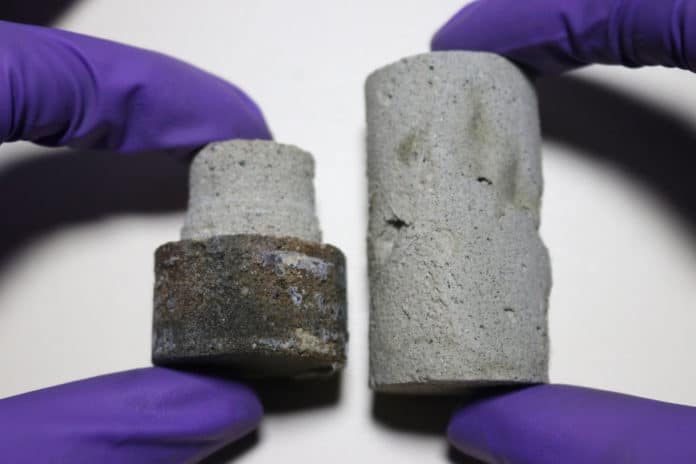Half a century after humans first walked on the moon, several private companies and nations plan to build permanent bases on the lunar surface. New work has taken the first significant step towards constructing buildings in space.
Scientists from the Indian Institute of Science (IISc) and the Indian Space Research Organisation (ISRO) have developed a sustainable process for making brick-like structures on the moon. This breakthrough has brought two different fields — biology and mechanical engineering — together.
Scientists have shown that Microbial Induced Calcite Precipitation (MICP) can make consolidated structures – space bricks – using lunar soil simulant (LSS). It exploits lunar soil and uses bacteria and guar beans to consolidate the soil into possible load-bearing structures. These “space bricks” could eventually be used to assemble structures for habitation on the moon’s surface.
The cost of sending one pound of material to outer space is about Rs. 7.5 lakh, whereas this new process, which can be sourced from human urine and lunar soil as raw materials, can considerably decrease the overall expenditure.
The procedure likewise has a lower carbon footprint since it utilizes guar gum rather than concrete for support. This could likewise be used to make sustainable bricks on Earth.
Aloke Kumar, Assistant Professor in the Department of Mechanical Engineering, IISc said, “Some micro-organisms can produce minerals through metabolic pathways. One bacterium, called Sporosarcina pasteurii, produces calcium carbonate crystals through a metabolic pathway called the ureolytic cycle: it uses urea and calcium to form these crystals as byproducts of the pathway. Living organisms have been involved in such mineral precipitation since the Cambrian period, and modern science has now found a use for them.”
To create the brick, scientists first mixed the bacteria with a simulant of lunar soil. Next, they added the required urea and calcium sources along with gum extracted from locally-sourced guar beans. The final product obtained after a few days of incubation was found to possess significant strength and machinability.
Koushik Viswanathan, Assistant Professor in the Department of Mechanical Engineering, IISc, another author, said, “Our material could be fabricated into any freeform shape using a simple lathe. This is advantageous because this completely circumvents the need for specialized moulds – a common problem when trying to make various shapes by casting. This capability could also be exploited to make intricate interlocking structures for construction on the moon without additional fastening mechanisms.”
Kumar said, “We have quite a distance to go before we look at extra-terrestrial habitats. Our next step is to make larger bricks with a more automated and parallel production process. Simultaneously, we would also like to enhance the strength of these bricks further and test them under varied loading conditions like impacts and possibly moonquakes.”
Journal Reference:
- Rashmi Dikshit et al. Space bricks: From LSS to machinable structures via MICP. DOI: 10.1016/j.ceramint.2020.07.309
- Dikshit R, Jain A, Dey A, Kumar A (2020), Microbially induced calcite precipitation using Bacillus velezensis with guar gum, PLOS One, 15(8): e0236745. DOI: 10.1371/journal.pone.0236745
